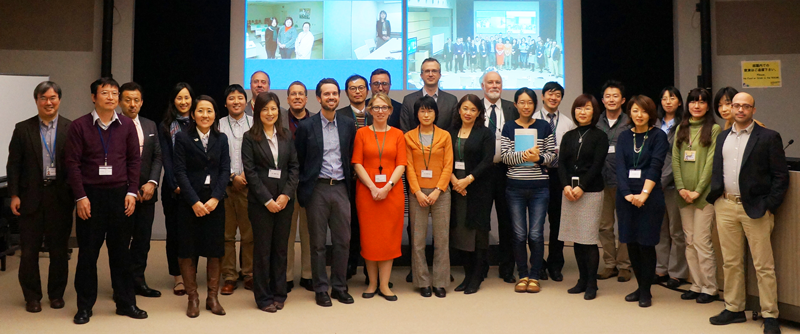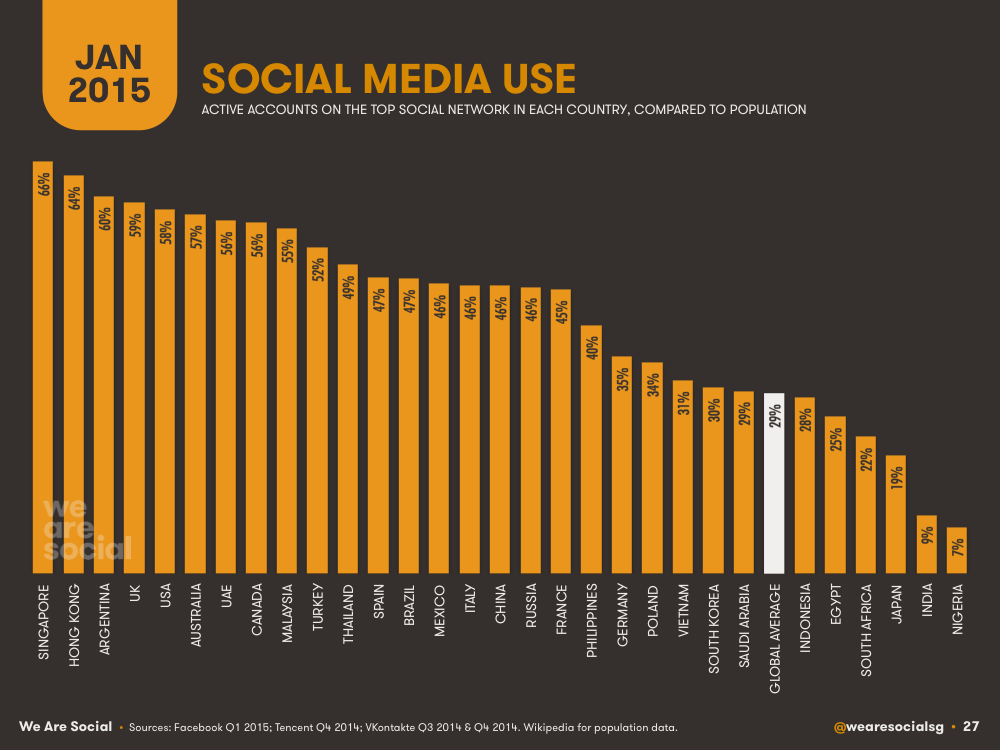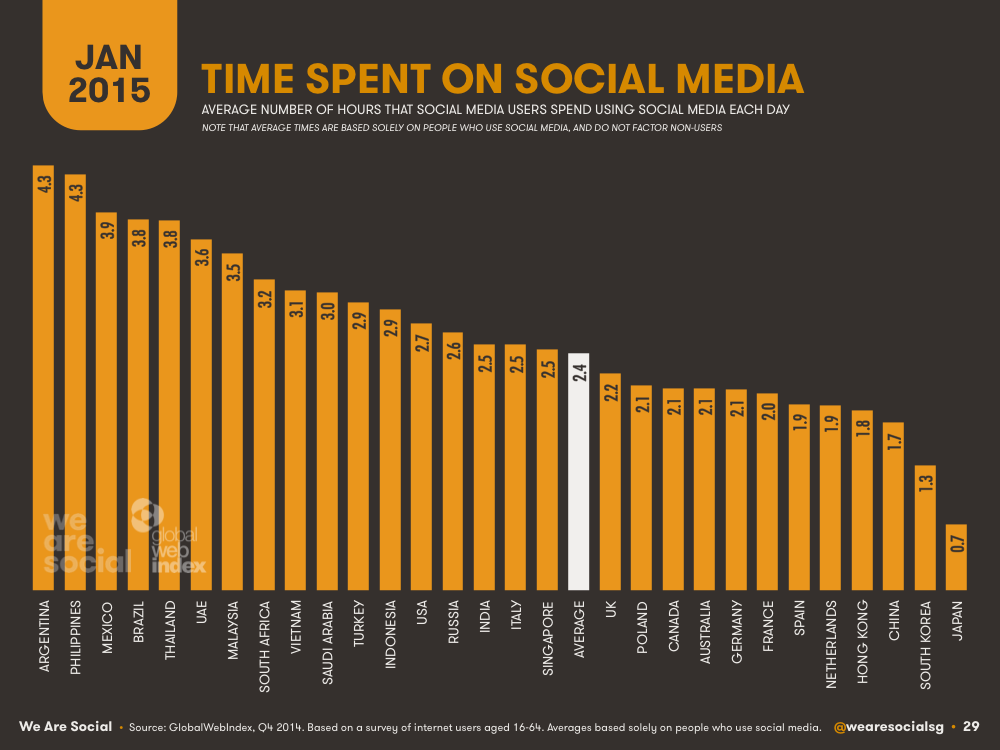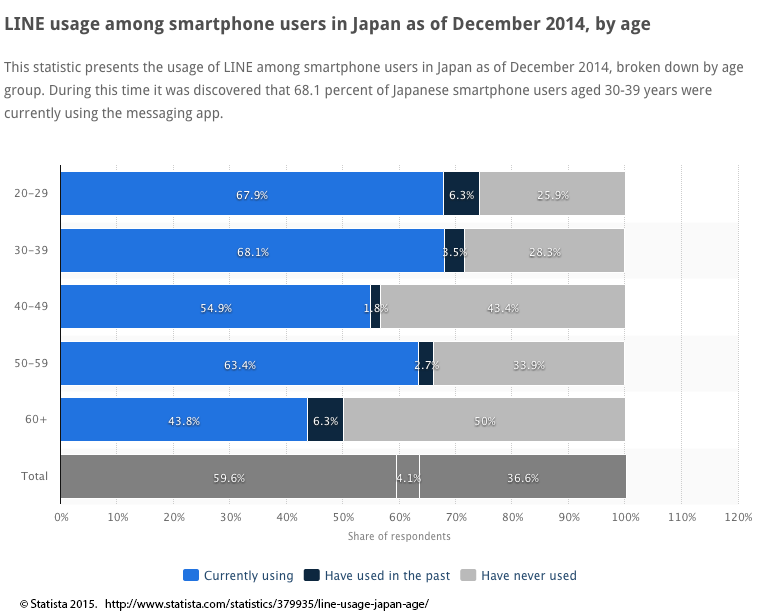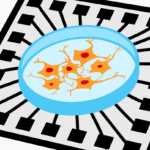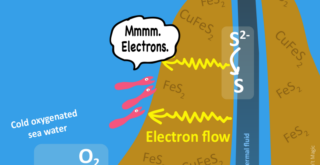Last Friday I participated in a small symposium that focused on international science communication in Japan (for institutions) using the internet and social media. While the turnout was small, I think everyone felt it was more-or-less successful. There were presentations by Stephen Pincock from Nature Publishing Group (NPG), freelance science-and-technology journalist Tim Hornyak, and a panel discussion with Tomoko Otake from the Japan Times, Kaoru Natori from the Okinawa Institute of Science and Technology Graduate University (OIST), Nicky Phillips also from NPG, and me.
We had several interesting discussions, and what I wanted to mention here are my thoughts that spun off from the presentation given by Stephen Pincock. He showed us data about social media in Japan that was really surprising. As of Jan. 2015, only 19% of Japanese people had active accounts on major social networks (Facebook, Twitter, etc.). This doesn’t come close to levels found in other countries in Asia, Europe, or the Americas. My interest engaged, I found the source of his stats online at http://wearesocial.net/ and looked at the entire presentation for 2015. Here’s what I thought was interesting.
Internet usage
- Global average 42%
- USA = 87%, Japan = 86%, Spain = 77%, Russia = 60%, China= 47%, India = 19%
Time spent on the internet/day
- Philippines, Indonesia, India, USA, Mexico, Brazil, Poland, Vietnam ≈ 5 hours/day with more that 2.5/hours per day coming from mobile devices
- Japan = 3 hours/day with 1 hour coming form mobile devices.
Living in Tokyo and seeing people use their smartphones almost constantly throughout the day, I’m not sure if I believe these stats. They might be skewed because of the large percentage of older people (> 65 years) in Japan who don’t use the internet or smartphones (although I think a lot do use them), or my thinking might be skewed because the rest of Japan might not be like Tokyo.
Social Media
Even more surprising is that according to We Are Social, only 19% of Japanese people have an active social media account (from a predetermined list of social media). Compared to the top five countries—Singapore (66%), Hong Kong (64%), Argentina (60%), the UK (59%), and the USA (58%)—and the global average of 29%, this seems remarkably low. And then the data show that Japanese people only spent 0.7 hours a day using social media!
Really??
My personal anecdotal experience here in Japan is that people spend an incredible amount of time on their smartphones. Many use the messaging app LINE rather than joining networks like Facebook in which people are simply posting about themselves or what they’re interested in, hoping that people in their networks will care.
But don’t take my word for it. With a little googling I found that according to Statista, more than 59% of Japanese people used LINE as of one year ago (Dec 2014), and that includes more that 40% of people over 60 years old!
Just this single networking app would put Japan at #3 or #4 globally according to the data above. So, LINE seems to be a social media phenomenon particular to Japan.
Take-home message?
As always, you should question everything you read on the internet! These types of surveys really need to be examined carefully, just like the details of any scientific paper. Social media does not seem to be a dead-end outlet for science communication in Japan, but if we want to be effective, we will have to adapt and use the proper medium to reach our audience.
When trying to reach people in the rest of the world (or English-speakers in Japan), it seems that Facebook, Twitter, and a few others are still the way to go. But, as with any form of communication, science communicators need to pay attention to who their audience is and what each social media network is best at.
[yuzo_related]

